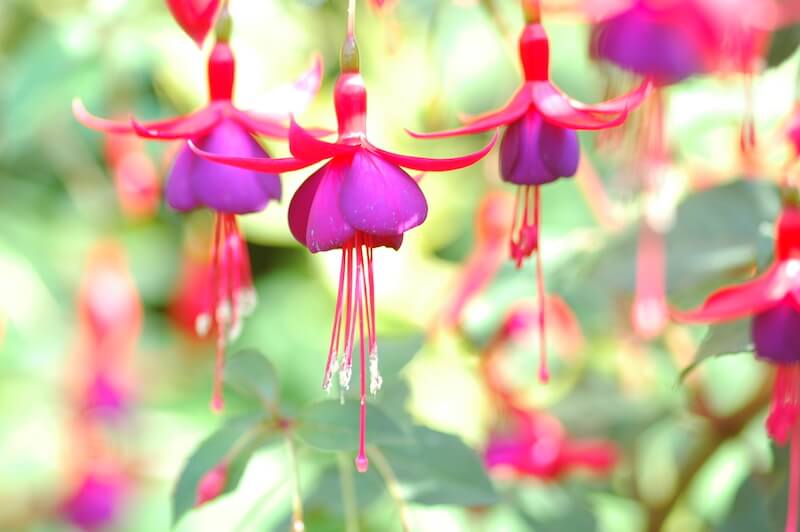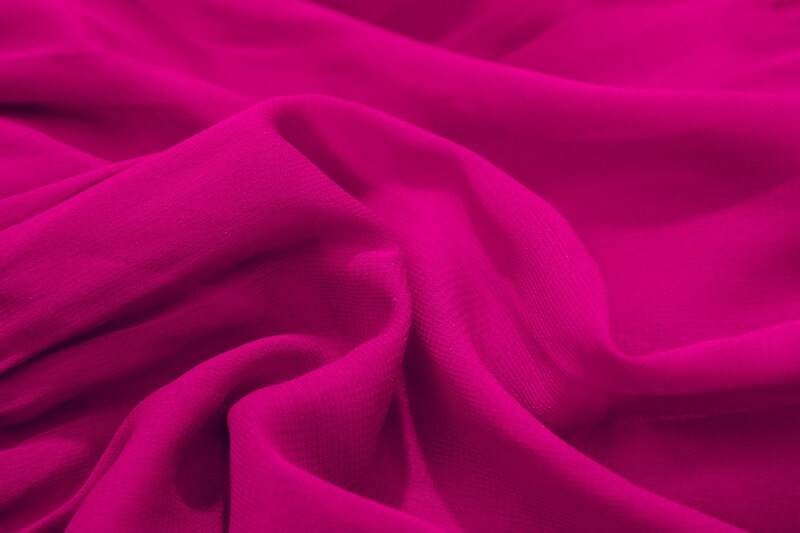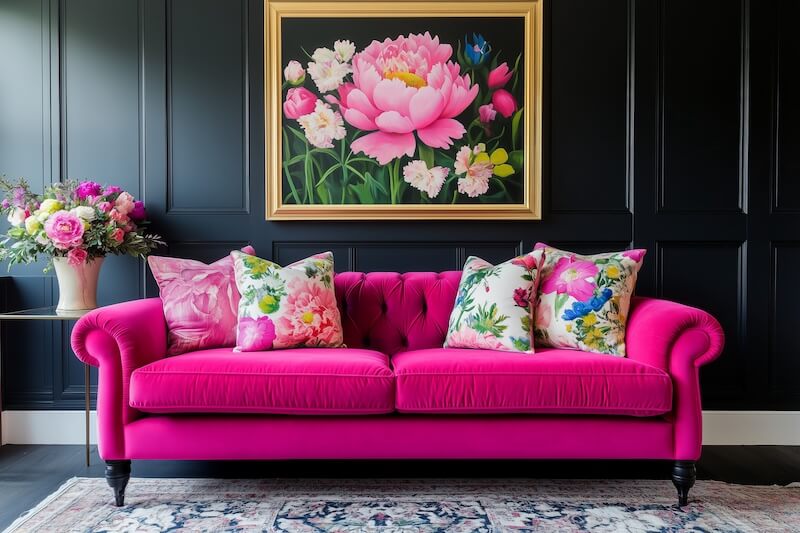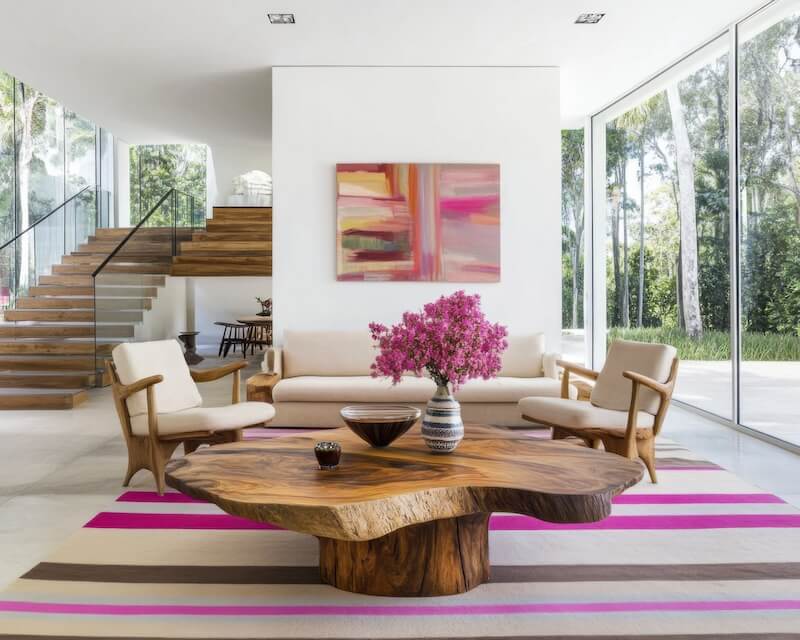When deciding between fuchsia and magenta, it’s important to recognize the subtle yet significant differences that set them apart. Both colors are vibrant, but each brings unique qualities to the table that can influence interior design color schemes or branding decisions. Fuchsia carries a brighter, purplish tint, while magenta leans towards a warmer, redder tone. Ever wondered how these distinctions came to be? The historical evolution of these colors might just surprise you.
3 Considerations About Fuschia and Magenta
- For RGB purposes, like on a digital screen, the colors are the same; in CMYK, however, fuchsia has a cooler, purplish tint, while magenta is warmer with a richer red base.
- Fuchsia is inspired by the fuchsia plant, whereas magenta’s name derives from the Battle of Magenta.
- Both colors are used in design to evoke creativity, with fuchsia leaning towards artistic palettes and magenta in digital contexts.
Historical Origins

Fuchsia’s roots trace back to the fuchsia plant, named by a German botanist, Leonhart Fuchs, in the 16th century. Known for its vibrant, purplish-pink flowers, the plant’s hue inspired the color name. Fuchsia is often associated with artistic endeavors and paint palettes.

Magenta’s story is linked to the world of synthetic dyes. During the 19th century, an aniline dye called “fuchsine” was discovered, later renamed “magenta” after the Battle of Magenta in 1859, a significant conflict in Italian history that marked the unification of Italy. This dye played a pivotal role in the textile industry, offering a vivid, reddish-purple shade that was revolutionary at the time.
Color Composition

In the world of color perception, fuchsia and magenta often challenge your eyes with their subtle yet distinct differences. Fuchsia and magenta’s color compositions both use red and blue for a blend of pink and purple, but fuschia tends more towards purple while magenta leans red.
Fuchsia Composition
Fuchsia’s blend artfully balances pink and purple hues. This eye-catching shade has its own unique identity within the color spectrum. Fuchsia composition is classified as a secondary color, created by combining equal parts of red and blue. Unlike magenta, which is considered a primary color in digital color models, fuchsia leans more towards a purplish tint.
When fuchsia was first introduced, it captured attention for its bold and lively appearance, quickly becoming a favorite in fashion, design, and art.
Magenta Composition
Unlike fuchsia, magenta holds its place as a primary color in the world of digital media, bridging the gap between red and blue. Magenta’s unique position makes it significant in digital applications, allowing for a wide range of color possibilities.
In printing and design, magenta is one of the four vital colors in the CMYK color model, along with cyan, yellow, and black. This model is key for producing the full spectrum of colors seen in printed materials.
Common Uses of Fuchsia and Magenta

Fuchsia and magenta find their niches in various fields, bringing their unique flair to design, fashion, and branding. In interior design, these colors can be used to create bold, eye-catching accents. Imagine a fuchsia throw pillow on a neutral couch, or a magenta feature wall that adds depth and richness to a room. These colors are perfect for making a statement and infusing a touch of luxury into a space.
In fashion, fuchsia and magenta are often used to create dynamic and daring outfits. They can make a simple dress pop or add a splash of color to accessories like shoes and handbags. These colors are not only trendy but also versatile, allowing you to express your personality through your wardrobe.
In branding, companies often use fuchsia and magenta to stand out in a crowded market. These colors evoke feelings of creativity and excitement, making them ideal for brands that want to appear innovative and energetic. Whether you’re designing a logo or planning a marketing campaign, incorporating these vibrant hues can help catch the eye and leave a lasting impression.
These Versatile Colors Have Much to Offer!
When it comes to fuchsia and magenta, you might think they’re too similar to care about their differences. However, understanding their differences can elevate your design choices. Fuchsia’s cooler, purplish hue contrasts with magenta’s warmer tone, offering unique options for impact. Whether you’re decorating your home or picking an outfit, appreciating these nuances helps create the desired mood and message. Don’t dismiss these colors as interchangeable; embrace their distinct qualities to enhance your creative projects.




